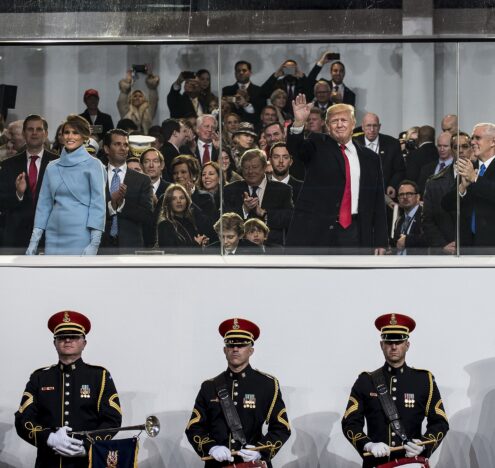This analysis was featured in Critical State, a weekly newsletter from Inkstick Media and The World. Subscribe here.
Last week, Deep Dive began to look at the Journal of Peace Research’s special issue on climate change and security by learning about the struggles faced by urbanizing climate refugees. This week, the focus is on attention to the countryside by examining how climate change affects food production and how conflicts over food arise.
To the extent that political violence is fundamentally a contestation over the management of scarce resources, it is generally agreed that scarcer resources mean more contestation. When there are more resources, more equitably distributed, there tends to be less conflict over resources. That is particularly true of essential resources like food. If there is less food for more people, then fighting over its distribution becomes more likely. When climate change reduces crop yields, therefore, we should expect more violence over the remaining food as a result.
That’s a tidy theory, but we actually don’t know very much about the mechanism by which climate change’s effects on food production drive political violence. How does climate change actually affect agricultural systems, and which parts of those systems are most vulnerable to violent contestation? Researchers Paola Vesco, Malcolm Mistry, Matija Kovacic, and Mihai Croicu set out to address aspects of those questions in their new article.
Vesco et al. focus their questions on where staple food crops actually get produced. Tracking changes in the physical layout of agricultural systems, they reasoned, could provide insight into how those systems relate to the geography of political violence. Specifically, they were interested in the extent to which climate change caused the consolidation of food production in smaller geographic areas and whether that had any impact on the onset of conflict.
That’s a tidy theory, but we actually don’t know very much about the mechanism by which climate change’s effects on food production drive political violence.
Luckily, the age of remote sensing makes it possible to measure the geography of crop production and to do it on a global scale. The researchers drew from a dataset of annual crop yields for four major crops from every 55-kilometer by 55-kilometer square of land mass on Earth, between 1982 and 2015, estimated using satellite imagery. That data allowed them to calculate a Gini index for crop production (GICP) — a measure of how evenly spread out farming of staple foods is in a given country. Like the more famous Gini index of wealth inequality, higher values are associated with more inequality. A country that grew all its food in one place and did not farm anywhere else would have a very high GICP score, while a country that grew food throughout its territory would have a very low score.
Using that data, Vesco et al. found that the effects of climate change — increasing temperatures and higher variations in precipitation — drive up national GICP scores over time. As climate change increases the economic risk of farming, food production becomes more specialized and more geographically concentrated. That concentration can seriously impact food growth and distribution, but, from a political violence perspective, it has one clear implication: Food production that is limited in its geographic scope is easier to control through violence than food production that is more spread out.
Indeed, the researchers’ data bears that conclusion out. Countries that saw their GICP grow also saw the chances of civil, ethnic and communal conflict all increase as a result. In countries that rely on agriculture as a major part of their national economy, the effect is far greater, with single-standard deviation increases in GICP leading to a 14% increase in the likelihood of civil conflict onset. Interestingly, the researchers find no significant correlation between climate change itself and conflict outbreak. Hotter days and rainier rainy seasons do not, in and of themselves, move the needle on political violence. Yet, when those climate effects take place alongside a GICP increase, they cause a dramatic increase in conflict likelihood.
Vesco et al.’s work offers a compelling insight into how the much-discussed increase in conflict as a result of climate change might actually take place. In an urbanizing world, production of inputs that allow cities to function — food, water, energy, and the like — has become restricted to a few crucial rural areas. Climate change speeds that trend, creating both resource crunches when crops fail and more concentrated, lootable areas when the harvest is bountiful. If the trend continues, people may be fighting over those areas for a long time to come



















